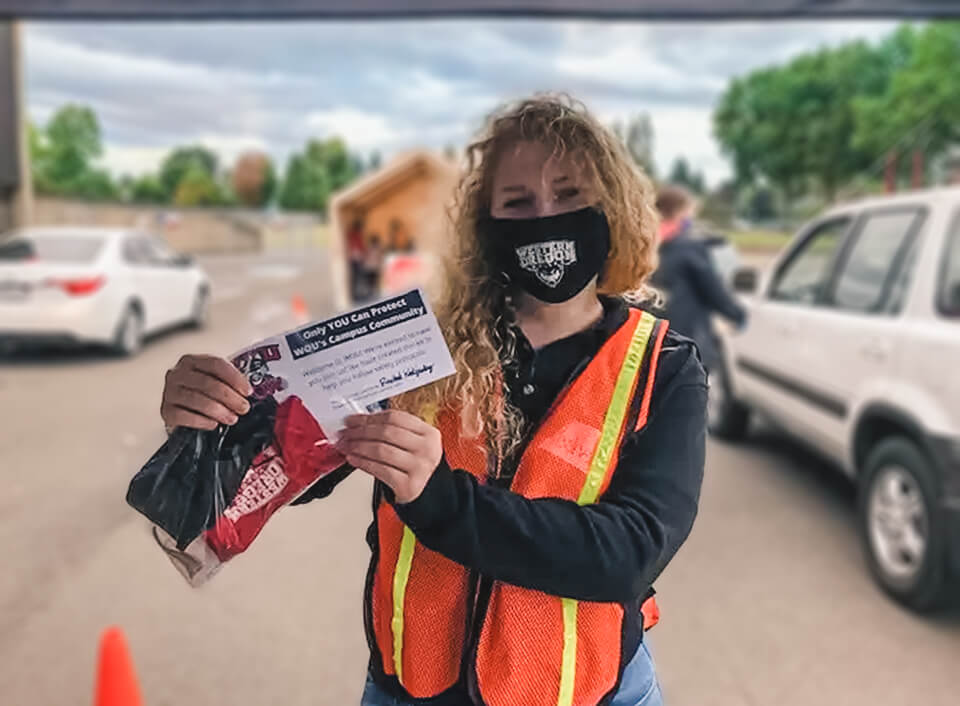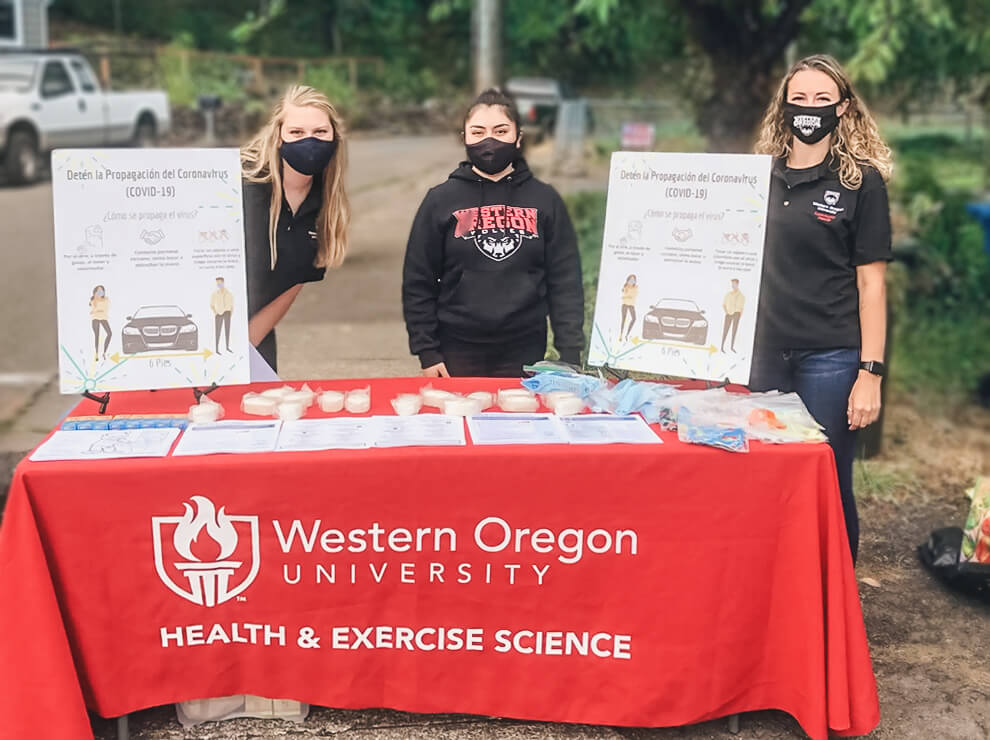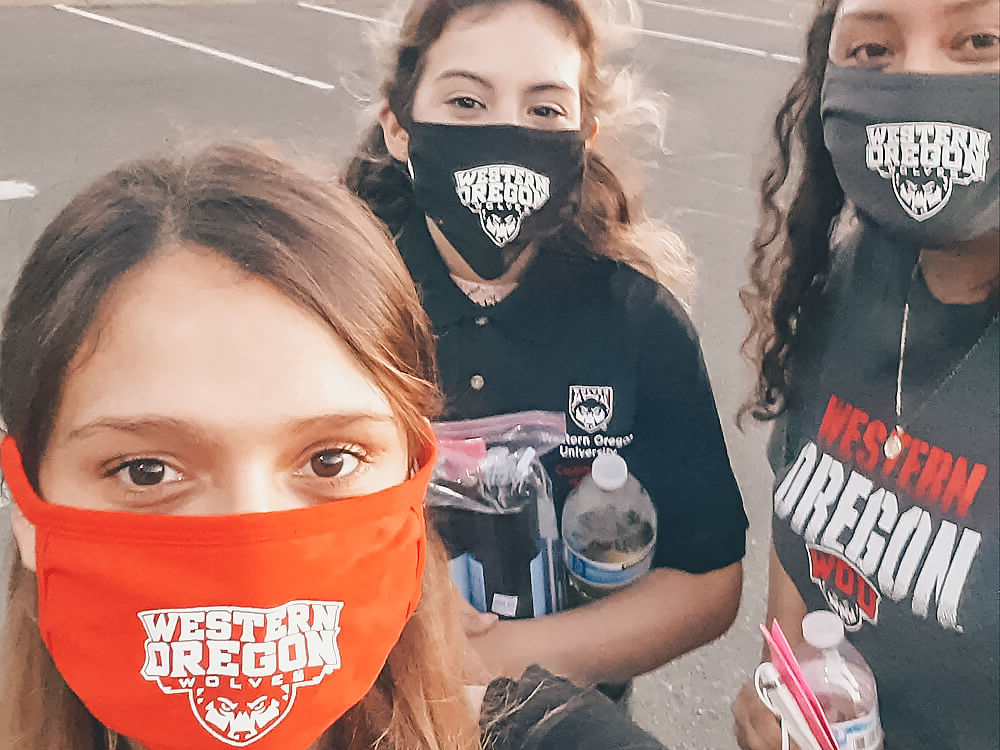HEXS’ contact tracing project expands scope to include public outreach
In the early days of the COVID-19 pandemic, the Division of Health & Exercise Science (HEXS) formed a partnership with Polk County Public Health Department to assist with contact tracing in the county.
But in the months since, HEXS faculty and students have taken on a larger role in battling the pandemic and the Community Health program at WOU is now helping the county with both public health education initiatives and monitoring trends in COVID-19 data.

WOU Community Health Assistant Professor Megan Patton-Lopez and Associate Professor Emily Vala-Haynes are leading the project, which currently employs 15 university students and two recent HEXS graduates, who work as project coordinators. The WOU Community Health + Polk County COVID-19 Project also collaborates closely with several key partners, such as the WOU Gerontology program, to serve the community in COVID-19 prevention and control.
Vala-Haynes said WOU’s collaboration with Polk County is unique.
Patton-Lopez said the depth of the partnership means students get experience in all aspects of public health.
“Our project supports the local health authority in their efforts to prevent and control COVID-19 and that’s a win-win because our students also get public health experience they wouldn’t otherwise during the pandemic,” said Patton-Lopez.
HEXS receives funding through a contract with Polk County to cover contact tracing expenses and has received (to date) an additional $99,500 from the Oregon Health Authority for outreach and communication to increase access to accurate and timely information about COVID-19 within the county.

A multifaceted partnership
The core of the partnership with Polk County was in efforts to trace people who have been in contact with a person who tests positive for COVID-19.
Vala-Haynes said county employees interview people who test positive for COVID-19 and they generate a list of everyone with an exposure to that person, which is anyone who was within six feet of that person for 15 minutes or more. The student contact tracer’s role in the project is to then call all of the people potentially exposed and tell them they’ve had a potential exposure and explain how they should be self-quarantining. The students check in with these “contacts” every day for 14 days to track their symptoms.
At times the team has been tracking more than 100 people a day. As of the third week in October, the team was tracking 93 contacts.
Vala-Haynes said the students are so closely involved in the data that sometimes they notice trends, like a high number of cases in a certain area of the county , and they can use that information to develop outreach and communication action to promote awareness of COVID-19 prevention.
“It’s cool to see them over time really evolve and begin to lead in the project,” said Patton-Lopez.
Vala-Haynes said the team has also been assisting county leaders by preparing weekly reports for them that combine county-specific data with data from Oregon and summaries of national news about the virus. The report is provided to county leaders, local mayors and WOU President Rex Fuller to aid them in decision making.
Patton-Lopez said the project has also been developing educational and communication materials focused on meeting the needs of certain populations in the county like older adults and Latinx families with young children .
Vala-Haynes said the project was valuable for students because they get experience in working on an issue with a lot of unknowns in it.
“It’s teaching them to work with uncertainty. You have to develop resilience,” she said.
For more information about the collaboration between HEXS and Polk County, visit the COVID-19 project’s website.




